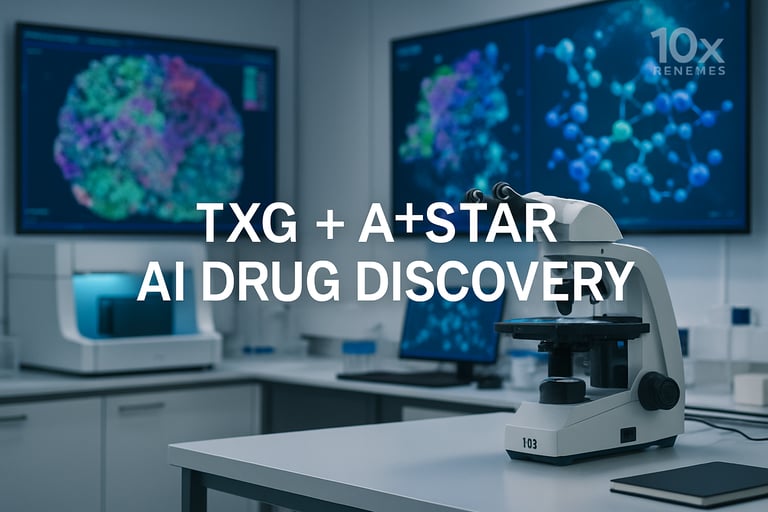10x Genomics, A*STAR GIS Launch AI-Driven Spatial Biology Collaboration to Revolutionize Cancer Treatment
July 17, 2025
The Xenium platform's ability to analyze FFPE samples is crucial for clinical applications, especially in studying cancers common in Asian populations.
Spatial biology enables visualization of gene activity at single-cell resolution within tissues, providing insights into disease mechanisms beyond traditional genomic methods.
Xenium's technology allows for the visualization of gene activity within intact tissues at the cellular level, preserving spatial context.
Analyzing 2,500 FFPE clinical samples, the project aims to discover novel biomarkers and therapeutic targets to promote personalized medicine.
This strategic partnership positions 10x Genomics as a leader in the rapidly growing spatial biology market, projected to exceed $10 billion by 2030.
A*STAR GIS contributes expertise in AI-driven data analysis and cancer research, aligning with 10x Genomics' mission to democratize advanced genomic technologies.
TISHUMAP leverages 10x Genomics' expertise in spatial biology and A*STAR's focus on translational genomics in Asia to accelerate personalized medicine.
10x Genomics and A*STAR GIS have launched the TISHUMAP collaboration to advance drug discovery and diagnostics by integrating spatial biology with artificial intelligence.
This partnership aims to identify new biomarkers and drug targets through AI-enhanced analysis of spatial biology data, building on the strengths of both institutions.
The initiative is expected to speed up the development of innovative diagnostics and tailored treatments for cancer and inflammatory diseases.
The project will analyze up to 2,500 FFPE clinical tissue samples from cancers such as gastric, liver, and colorectal using 10x Genomics' Xenium platform, which maps gene expression at the single-cell level.
Custom gene panels and intelligent software pipelines will be developed to handle the large datasets generated during the research.
This partnership exemplifies how strategic collaborations can lead to scientific breakthroughs, enhance reputations, and open new markets, ultimately improving public health.
The integration of AI into spatial biology workflows offers investment opportunities by enhancing predictive capabilities and reducing R&D costs.
Focusing on cancers with unique molecular signatures in Asia, the collaboration aims to develop scientifically novel and commercially relevant therapies.
Summary based on 2 sources
